What Is Keyword Intent?
Keyword intent (also known as search intent) is the reason why a user enters a specific term into a search engine.
For example, when someone searches “buy chia seeds,” the intent behind that search is probably to make a purchase.
But someone searching “what are chia seeds” probably just wants to learn more basic information about the chia seeds.
You can see this by entering the term into the Keyword Overview tool, which shows the intent type is informational.
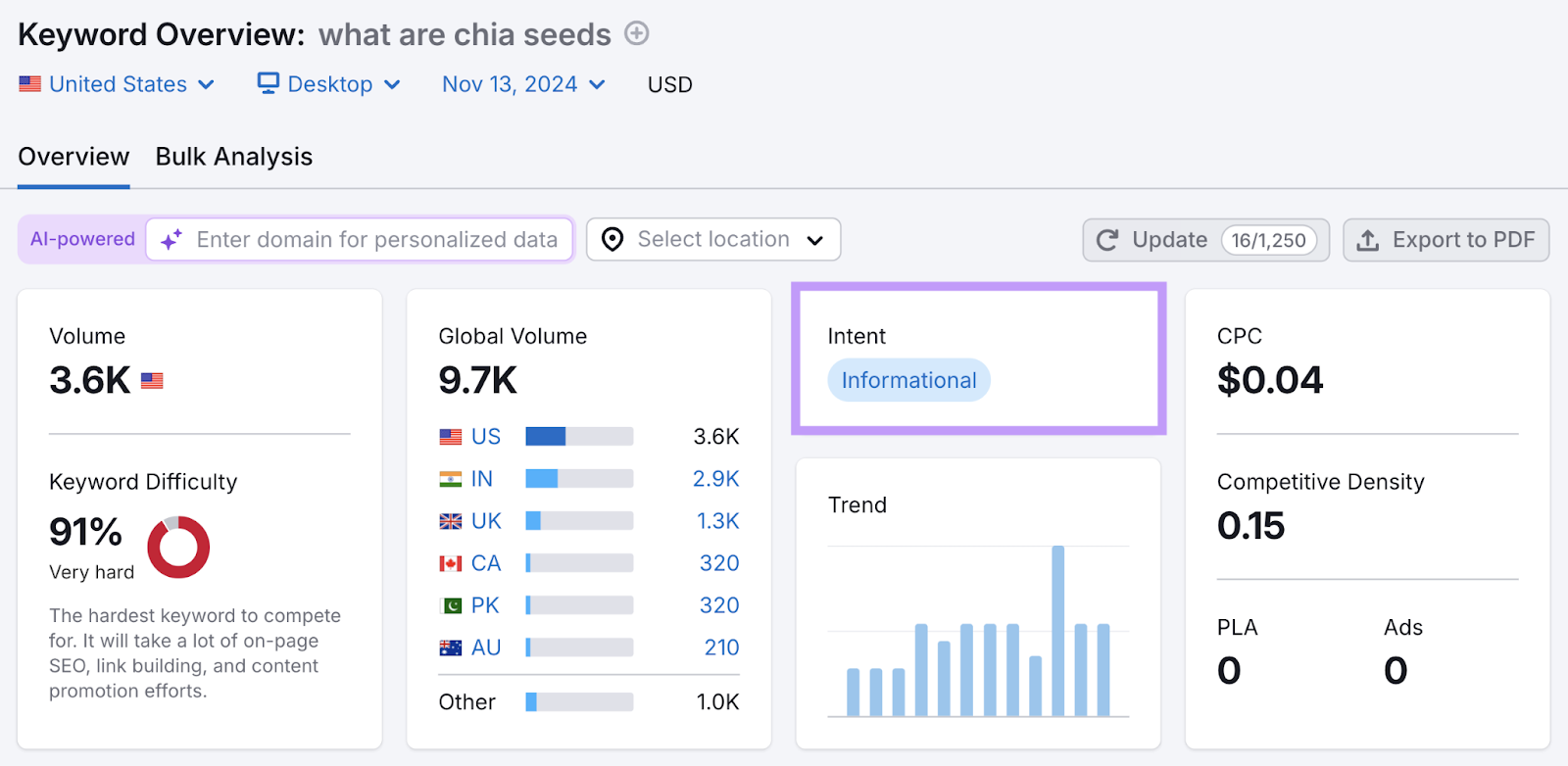
Before we get into the different types of intent and how to determine a keyword’s intent, let’s talk about the importance of aligning with it.
Why Is Keyword Intent Important in SEO?
Understanding and adequately addressing keyword intent in your website content will increase your chances of ranking (appearing in search results) for the keywords you want to target.
This is because Google’s goal is to answer searchers’ queries as effectively as possible. So, it shows pages that it thinks will help users best find what they’re looking for.
Let’s use the same examples as above to illustrate.
Here’s what the results page looks like for “buy chia seeds”:
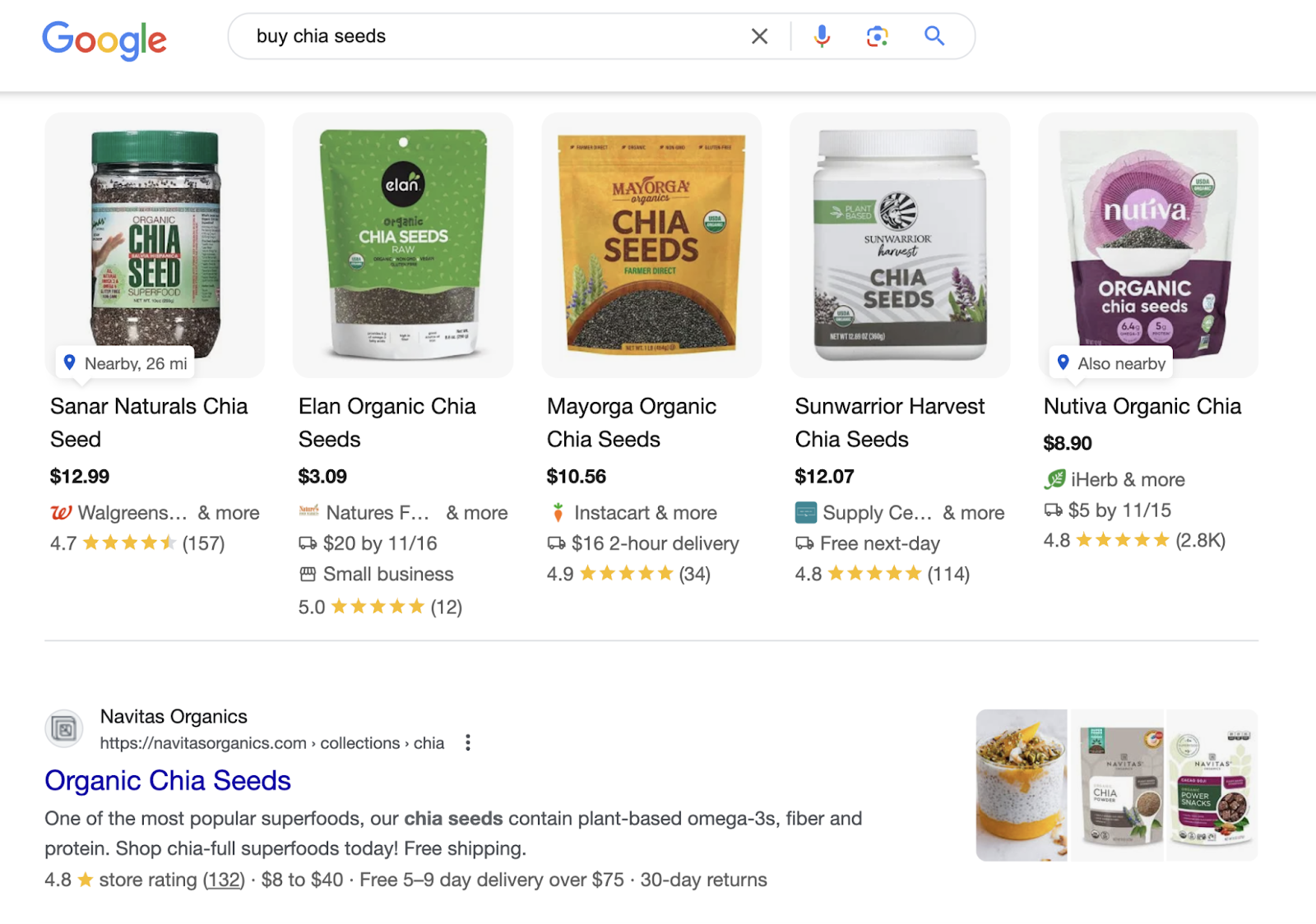
The results include a popular products carousel and standard listings that direct to product pages. Because Google knows searchers probably want to buy.
But someone searching for “what are chia seeds” will see something like this:
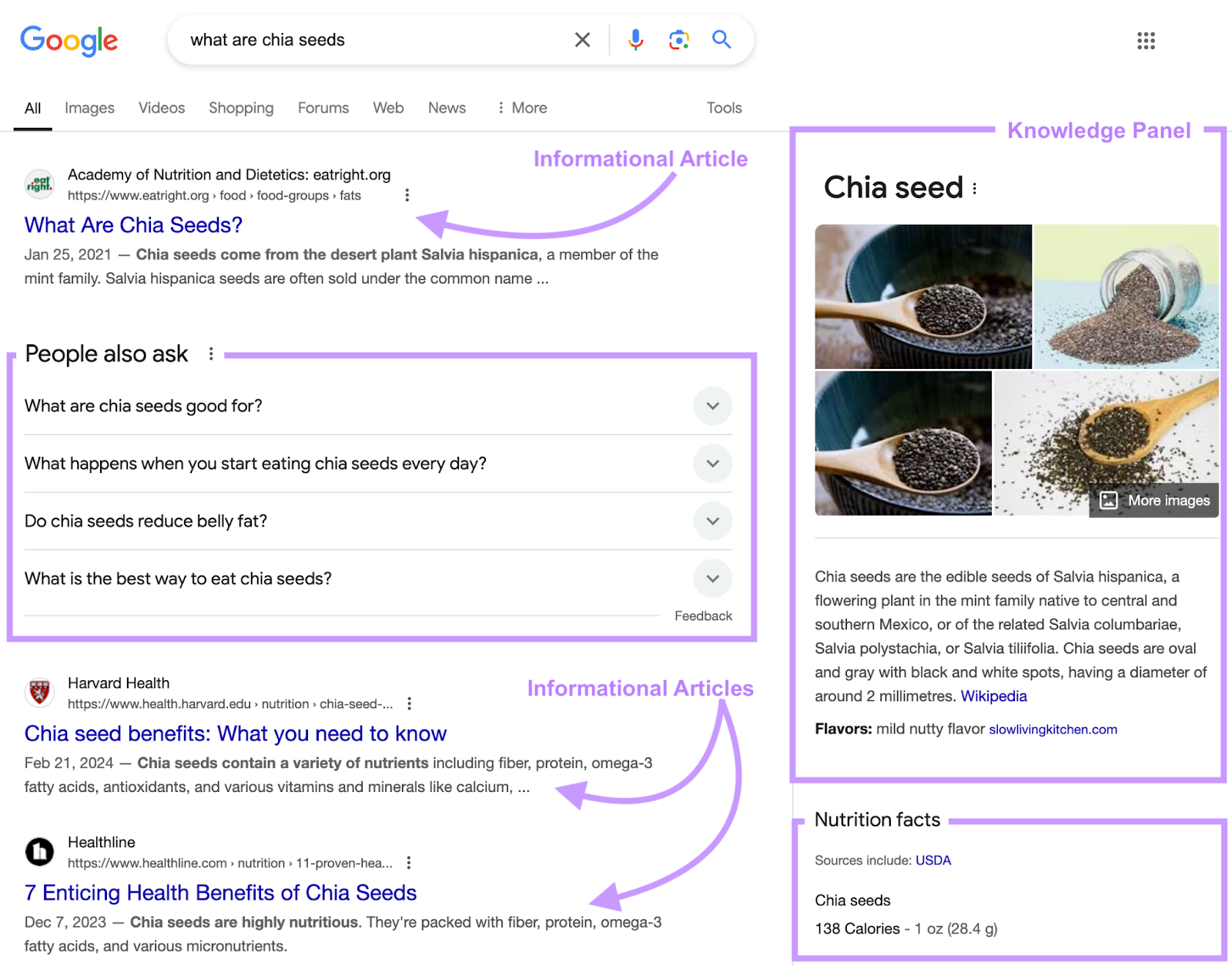
These results contain educational articles about chia seeds, a People Also Ask (PAA) section, and a knowledge panel (a summary of information based on Google’s knowledge of the entity):
So, you have a good chance of ranking for “what are chia seeds” if you write a complete guide on what chia seeds are and their potential health benefits. But you probably won’t rank for “buy chia seeds.”
4 Types of Keyword Intent
There are four main keyword intent types:
- Navigational keyword intent
- Informational keyword intent
- Commercial keyword intent
- Transactional keyword intent
And some keywords can have more than one intent type.
For example, the keyword “make coffee at home” is both informational and commercial,” which you can see in Keyword Overview.
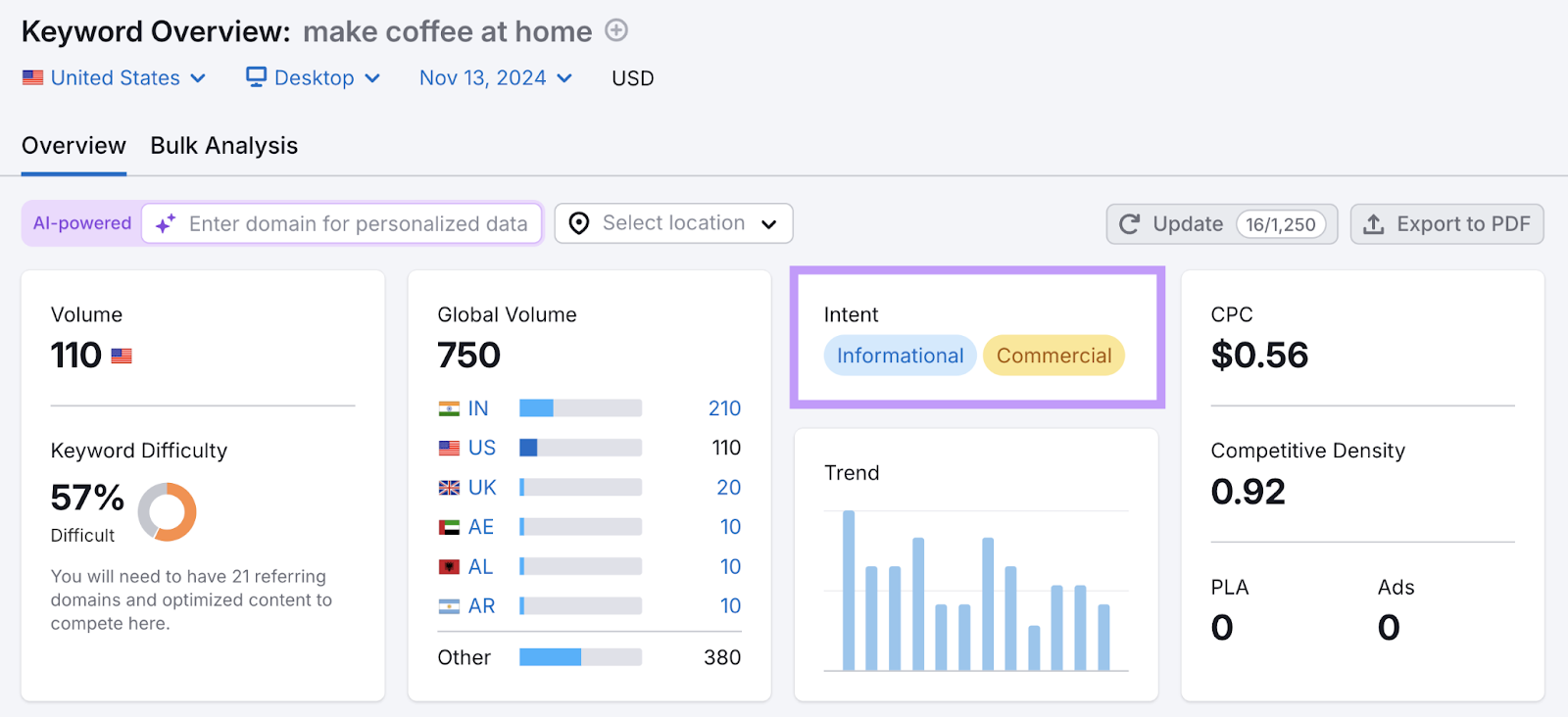
Let’s learn more about each of these keyword search intent types.
1. Navigational Keyword Intent
Navigational keywords are terms searchers use when they want to get to a specific page or website.
In these cases, users typically know exactly what they’re looking for.
Here are some examples of navigational keywords:
- “facebook login”
- “amazon shipping policy”
- “mamas little bakery chicago address”
- “youtube”
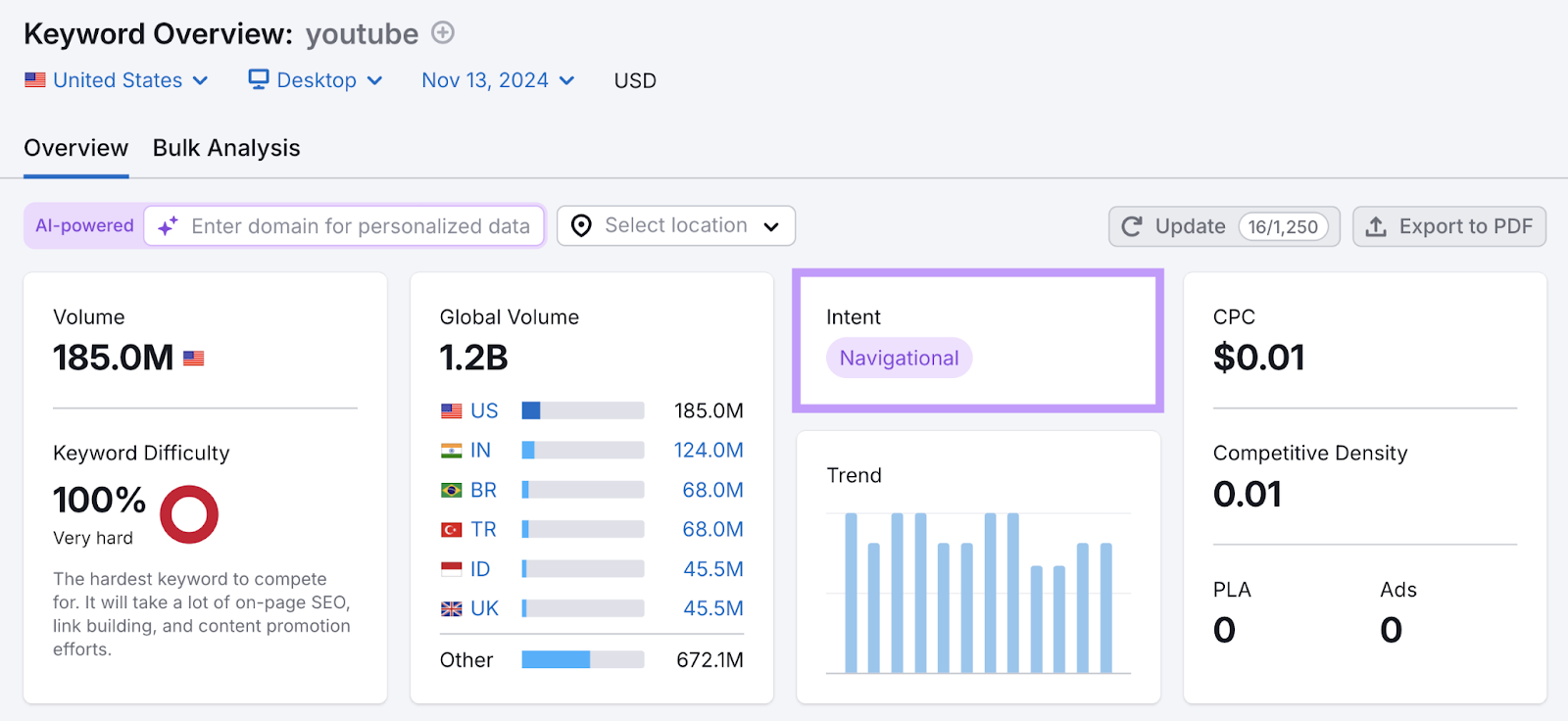
In general, navigational keywords have low buyer intent. Meaning that the user probably isn’t planning to make a purchase.
But in some cases, they can support conversions that may lead to tangible business results later on.
For example, when someone searches for “mamas little bakery chicago address,” they’re probably trying to find the exact location of a local bakery.
Once they find the address, they might stop by in person to browse the selection. And they may end up making a purchase at that time.
One nice thing about navigational keywords is that they’re often a bit easier to rank for because they’re often branded terms.
2. Informational Keyword Intent
People search for informational keywords when they want to learn about something.
These keywords often come in the form of questions and start with:
- “what is”
- “how to”
- “why is”
- “where is”

But informational keywords don’t always have to be questions. They can also look like this:
- “disavow backlinks”
- “maldives time now”
- “pasta bolognese recipe”
Informational keywords also have low buyer intent.
But it’s still a good idea to target these keywords in how-to blog posts, informational videos, infographics, etc.
By creating high-quality informational content, you establish yourself as a trustworthy source of information for your target audience. Which means that they’ll likely come back to your website to learn more.
And when they’re ready to make a purchase, they’ll already be familiar with your brand and your website.
3. Commercial Keyword Intent
People enter keywords with commercial intent into search engines when they’re doing research before making a purchase.
They’re not quite ready to buy because they need a little bit more information on the products or services they’re considering first. Which is why commercial keywords are often branded.
Here are some examples of branded commercial keywords:
- “google analytics alternatives”
- “stans donuts reviews”
- “macbook pro vs macbook air”
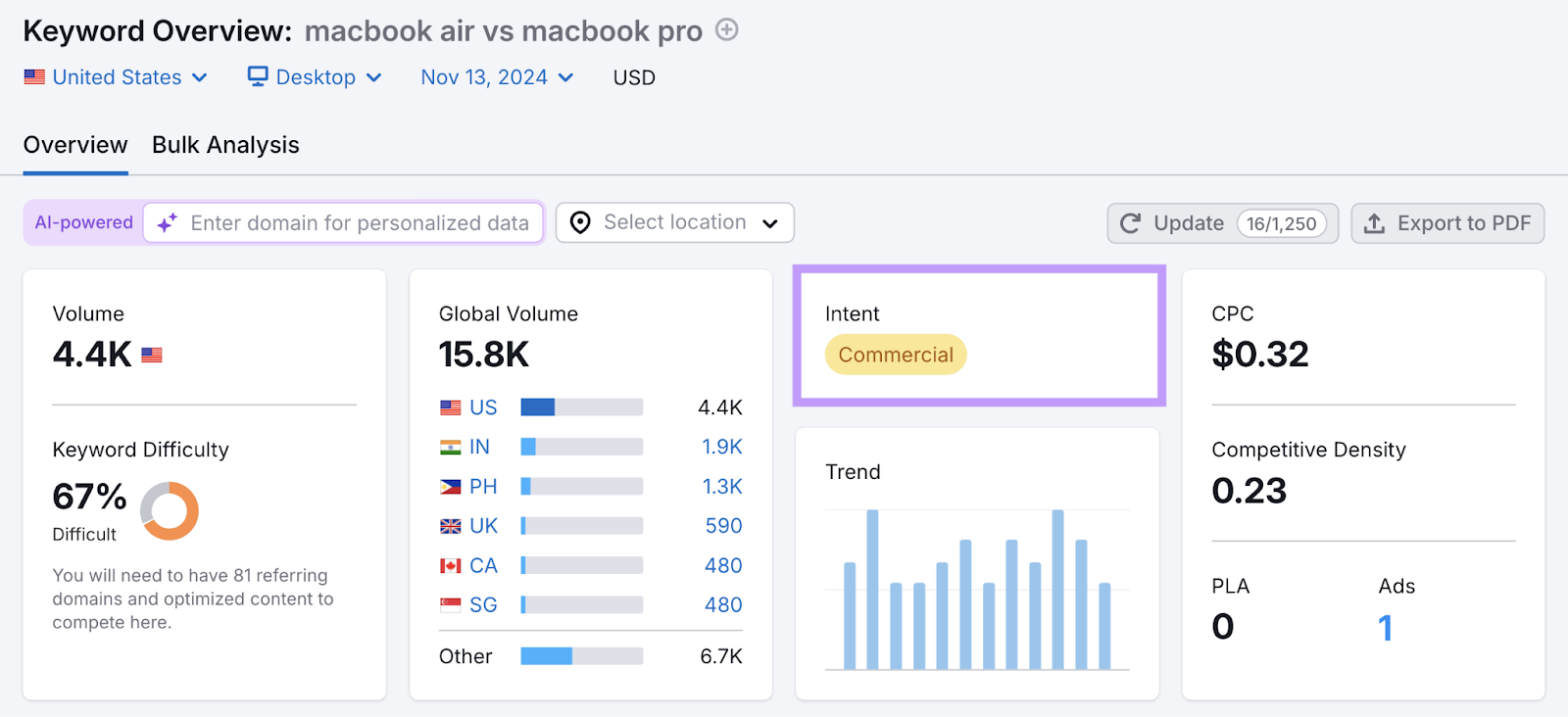
But they can also be unbranded like these:
- “custom birthday cakes”
- “wedding dresses”
- “best running shoes”
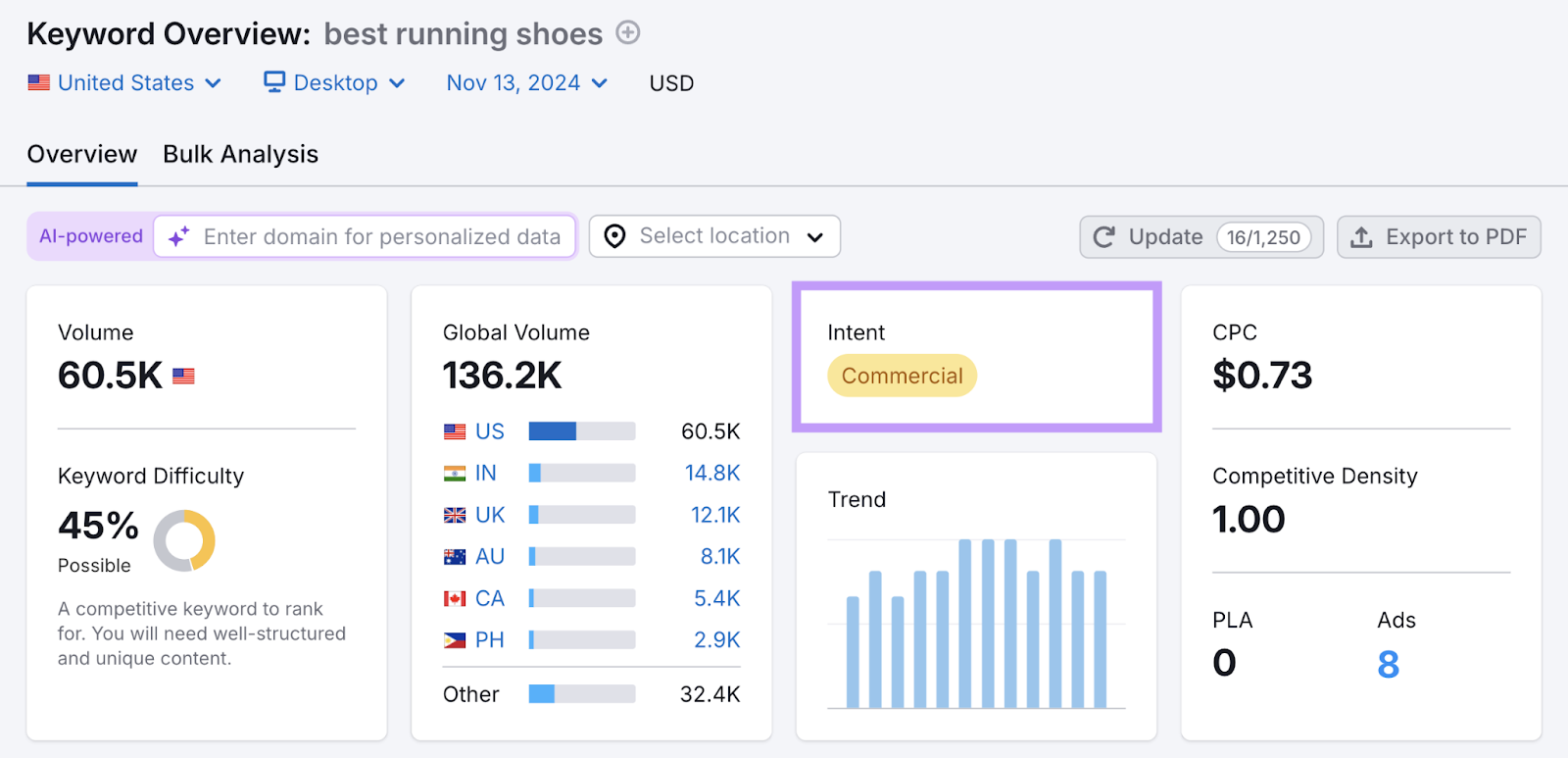
As you can see, commercial keywords often focus on comparing specific products, services, or brands. Or finding first-hand insight.
Commercial keywords have relatively high buyer intent. Which means there’s a higher chance that the user will make a purchase.
You can target commercial keywords with product/service landing pages, comparison articles, and pages that feature testimonials and reviews.
4. Transactional Keyword Intent
Users search for transactional keywords when they’re ready to make a purchase or subscribe to your services/offerings.
Here are some examples of transactional keywords:
- “buy audi tt”
- “italian restaurants near me”
- “zapier promo code”
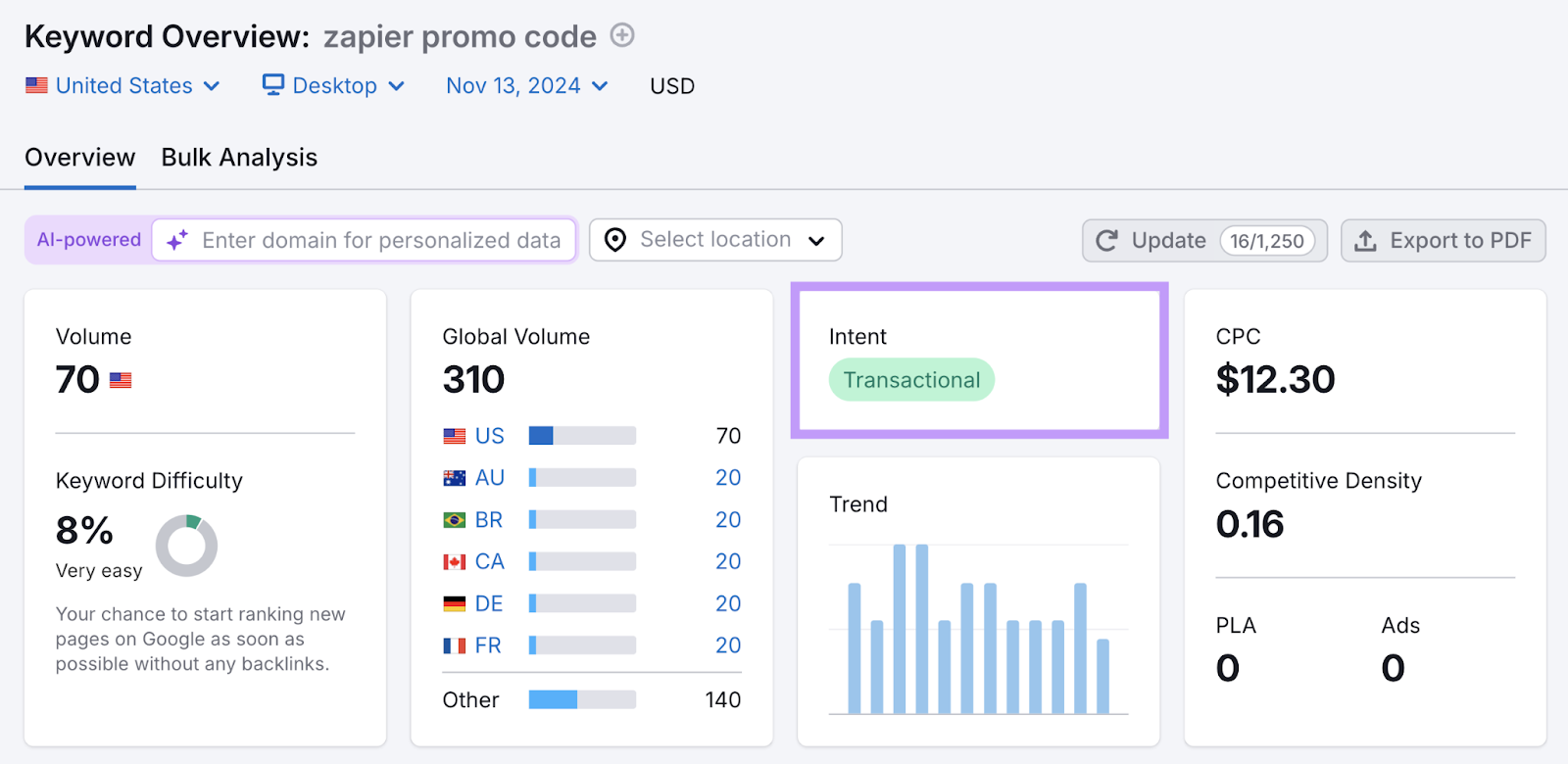
As you can see, transactional keywords have high buyer intent. Which means targeting them can drive revenue for your business.
But they can also indicate a desire to complete other conversions that might eventually lead to a purchase. Like signing up for a demo or getting a sample.
To target transactional keywords, create the following types of content:
- Sign-up pages
- Deals and coupons pages
- Product/service pages
- Free trial/sample pages
How to Identify Keyword Intent
There are a number of ways to find the intent behind keywords:
Manually Review Search Results
One of the simplest ways to learn about keyword intent is to perform a search for a term you want to target (or one you’re already targeting) to see what’s already ranking.
Open an incognito window in your browser (this is called an “InPrivate” window if you’re using Microsoft Edge) to ensure the results aren’t personalized to you.
Then, run a search for your term.

As you can see, how-to articles dominate the top results. Which means this keyword has informational intent.
But don’t stop there. Visit these pages to learn more about what they cover, how they’re formatted, etc.
Pay attention to:
- Format: Is it an article? A product page? A video?
- Length:Is it a long article or a short product description?
- Topics: What related topics does it cover?
- Structure: How is the information organized? Does it use tables, infographics, and/or text?
- Missing information: Is there any important piece of information that’s missing?
For example, this is one of the top-ranking pages for the same term as above:
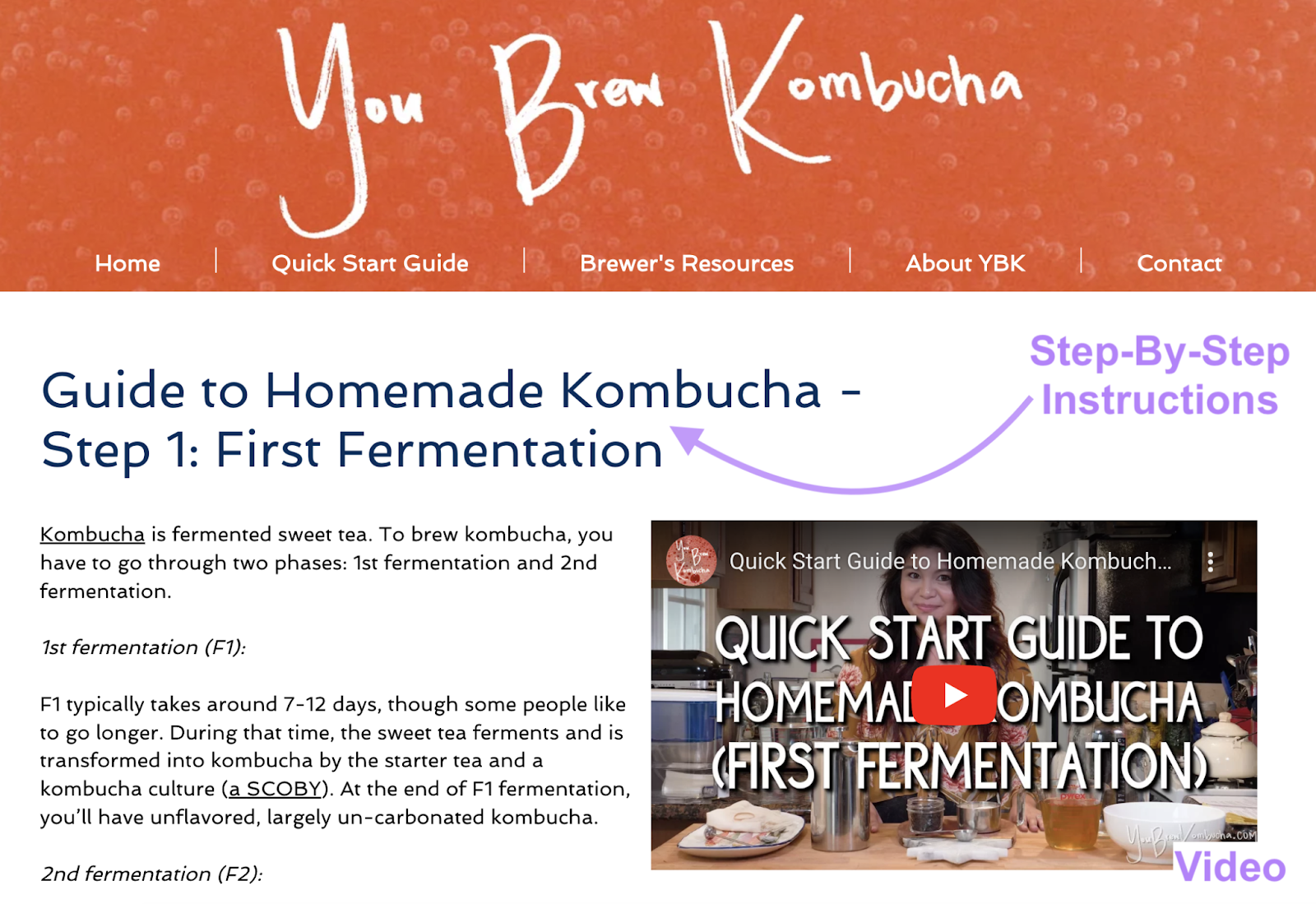
This page includes a video, goes over the basic steps, lists necessary equipment, and provides a detailed recipe.
Many of the other high-ranking pages include the same topics and structure.
All of this information will help you create the type of content users are looking for. Which can help you rank better for your target keywords.
Use Keyword Overview
Keyword Overview allows you to quickly find out any keyword’s main intent type without having to perform a manual search.
Let’s take a look at an example using the keyword “nordstrom shipping policy.”
After entering your term, click “Search.”
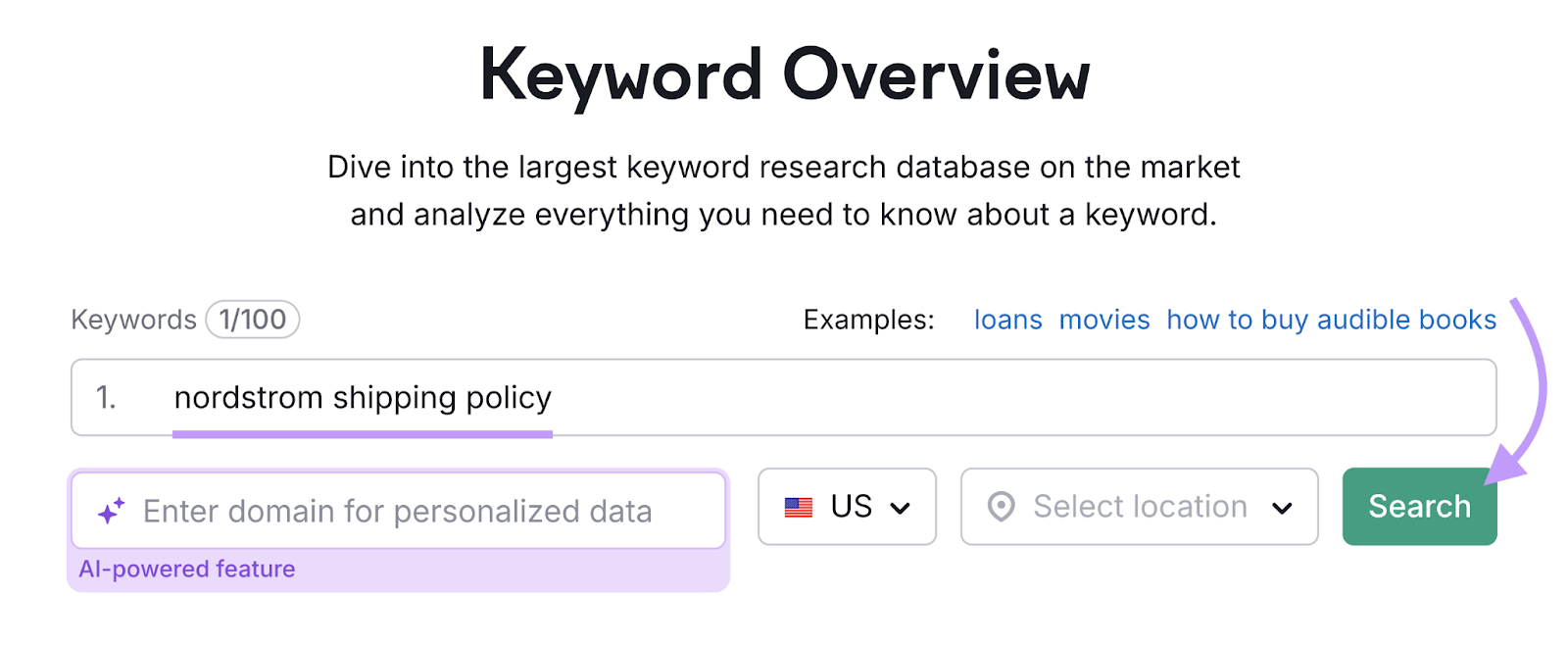
You can see that this keyword has two search intent types: navigational and transactional.
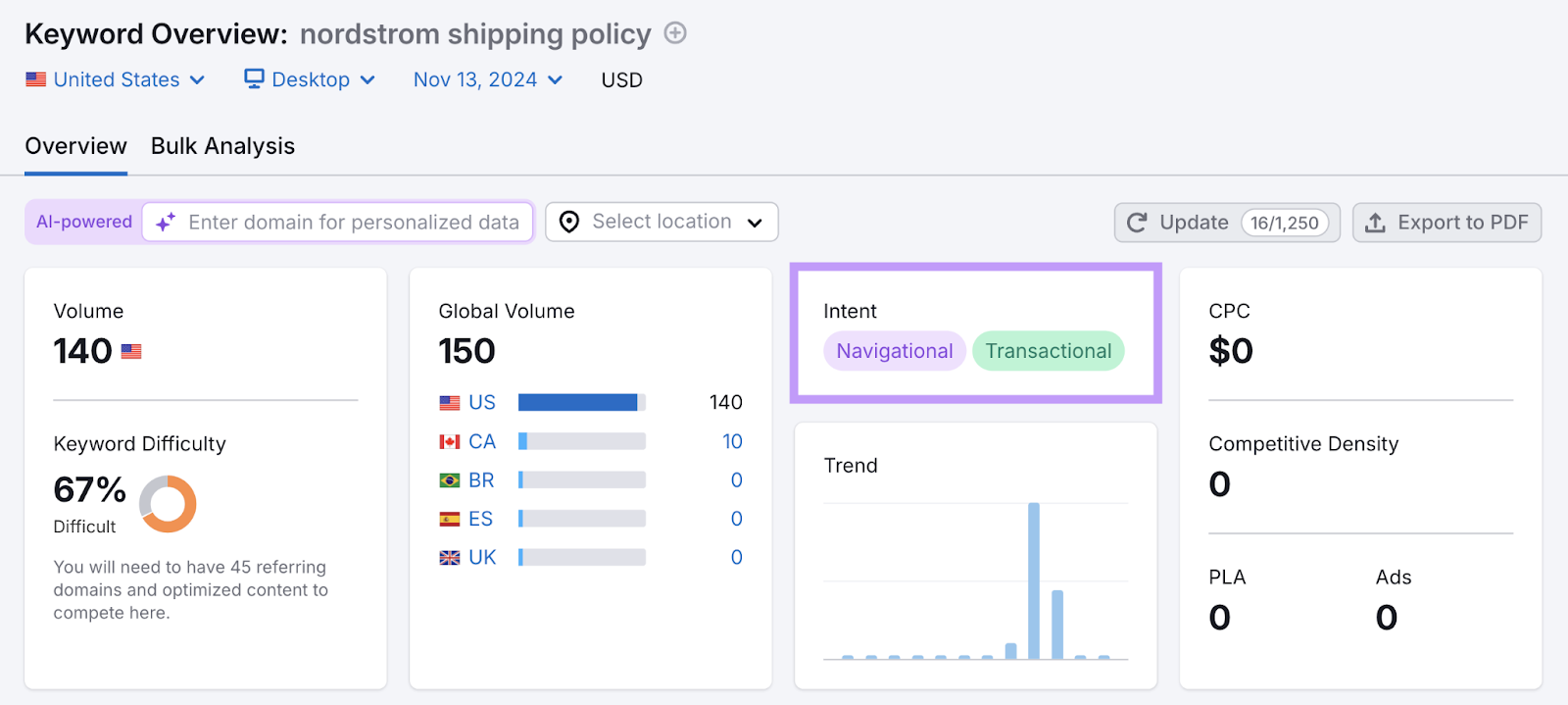
It’s navigational because a user is looking for a specific page on Nordstrom’s website. And transactional because they’re probably ready to buy something but want to check the shipping policy before they do.
Now, the next question is: Should you target that keyword?
Let’s see.
Scroll down to the “SERP Analysis” section to see the top 10 search results for that keyword.
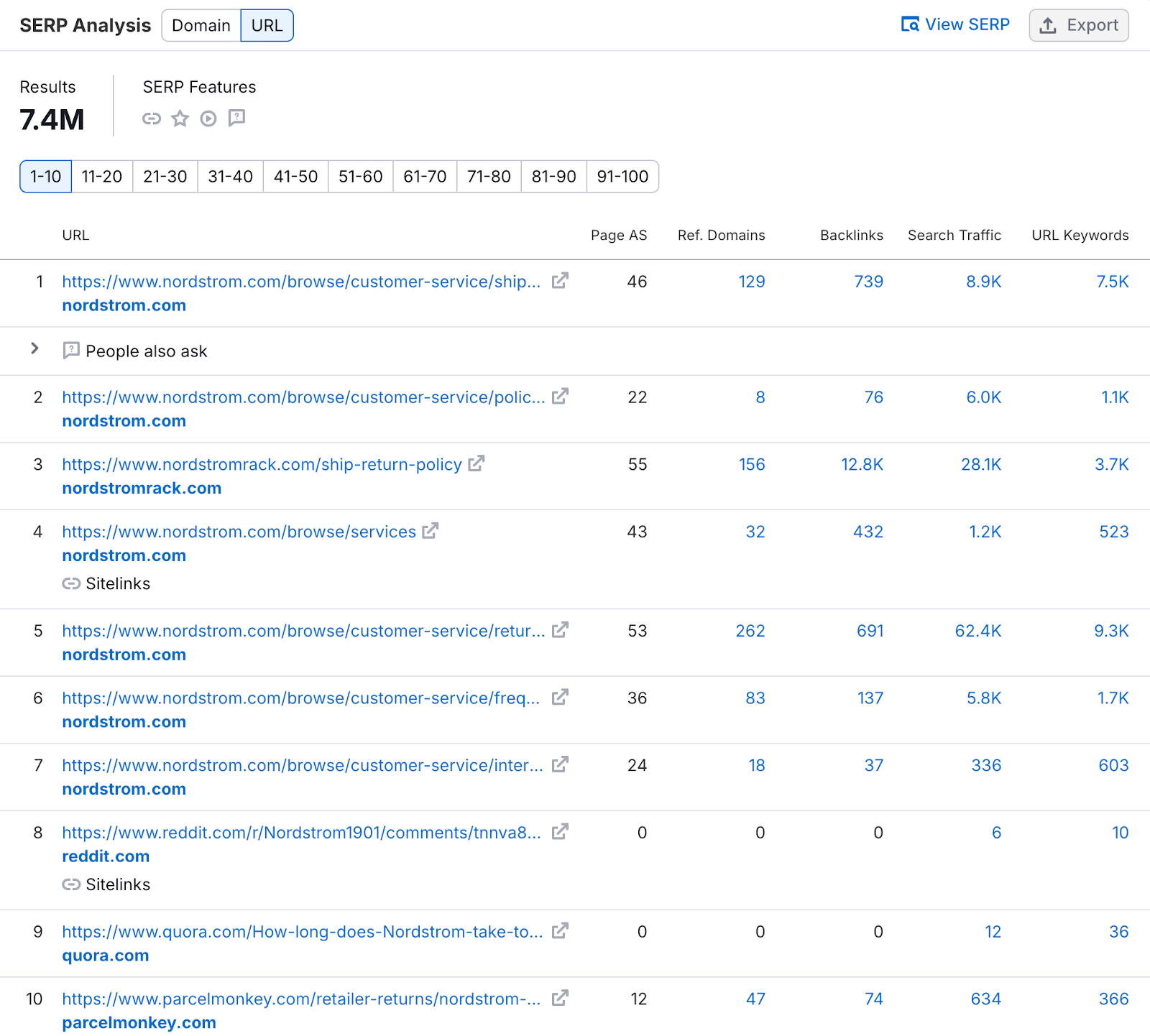
In this case, the top 10 results are either from Nordstrom’s website or forums explaining Nordstrom’s shipping policy.
So, you probably shouldn’t try to rank for this keyword if you’re from a competing brand.
Use the Keyword Magic Tool
The Keyword Magic Tool allows you to see different terms’ search intents as you do keyword research.
You can even use filters to get a list of related keywords with specific types of intent.
Let’s say you want to find out what keywords you could rank for that have high buyer intent.
Enter a broad term related to your niche (or one of your niches), add your domain name to get personalized results, and click “Search.”
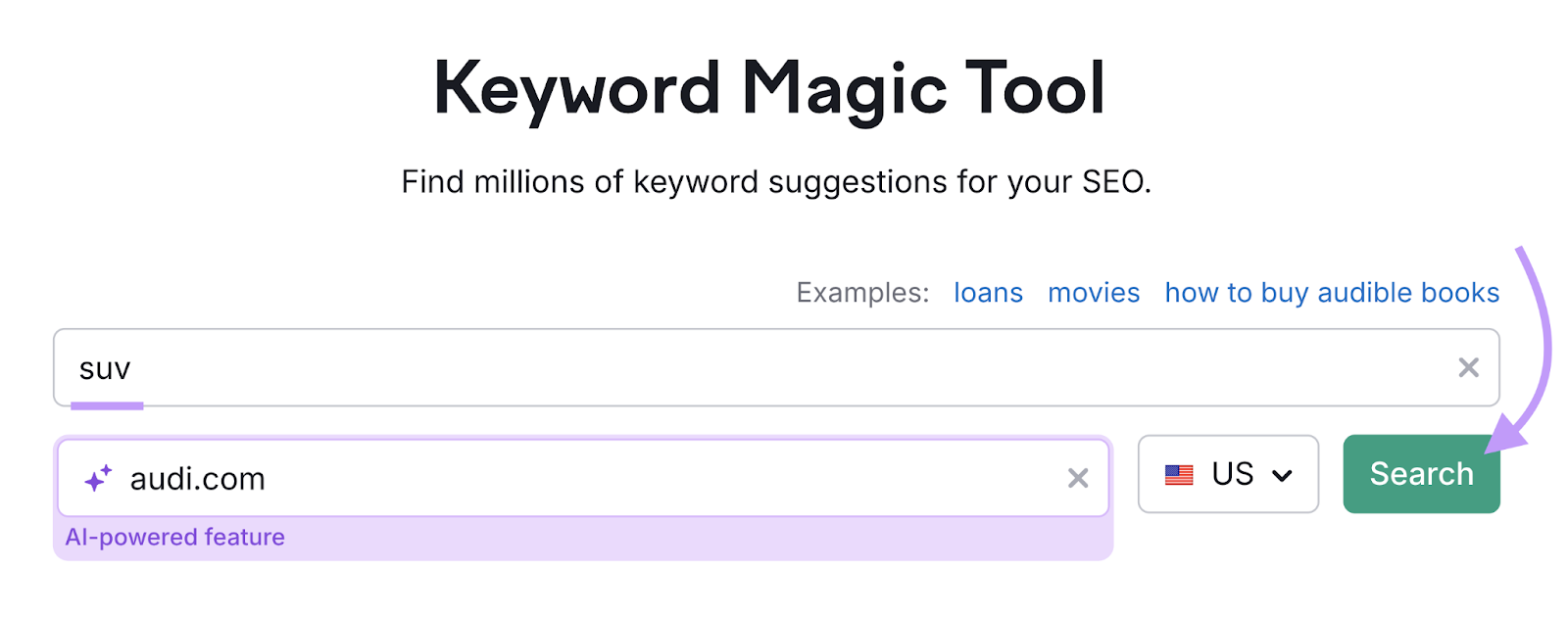
Above the list of keywords, click on the “Intent” drop-down, select the checkboxes next to “Transactional” and “Commercial,” and click “Apply.”
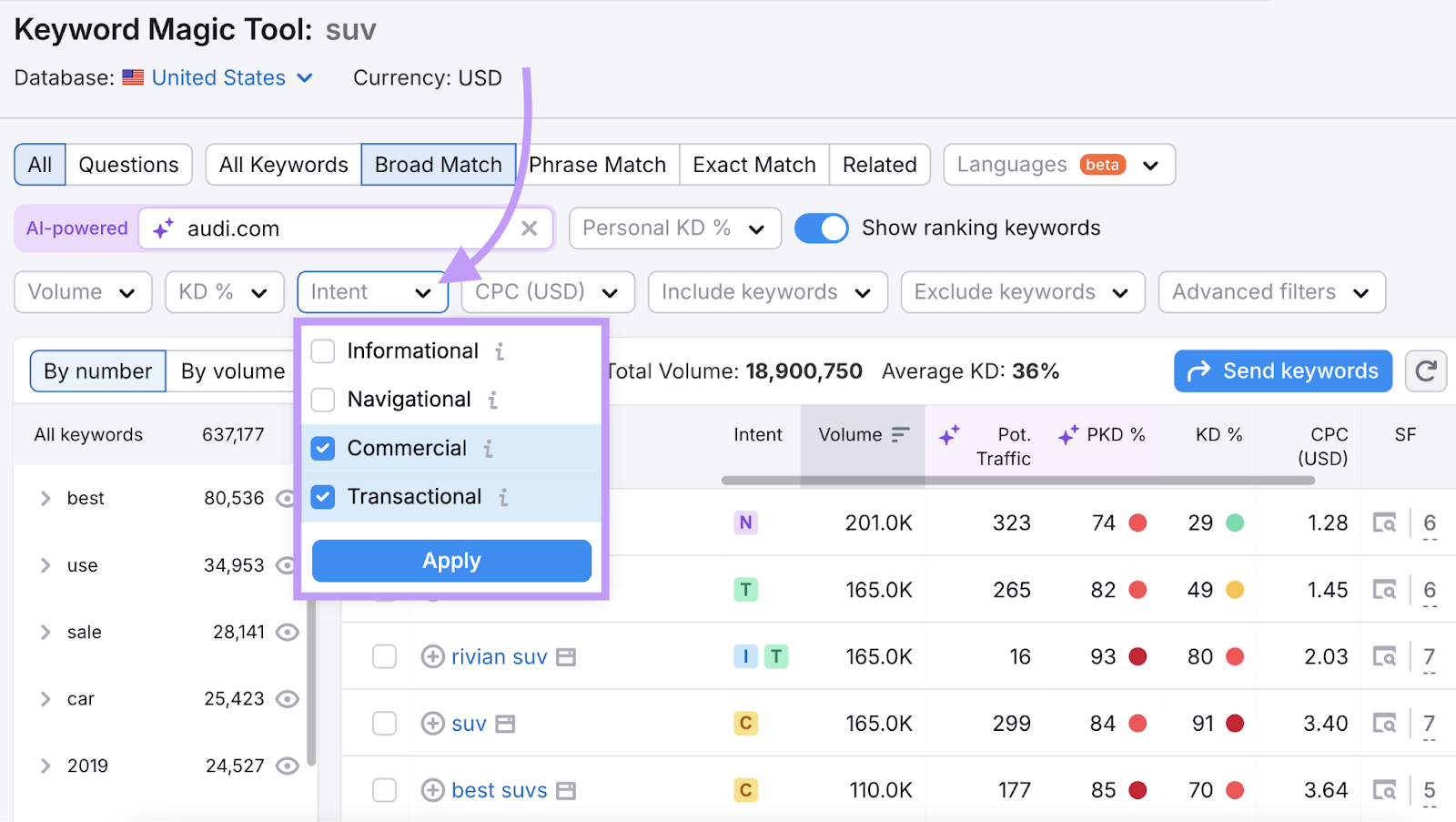
You’ll get a list of all the commercial and transactional keywords related to your brand.
If you notice a lot of branded terms for your competitors, choose the “Include keywords” drop down, make sure the “All keywords” option is selected, and add your brand name. Then, click “Apply.”
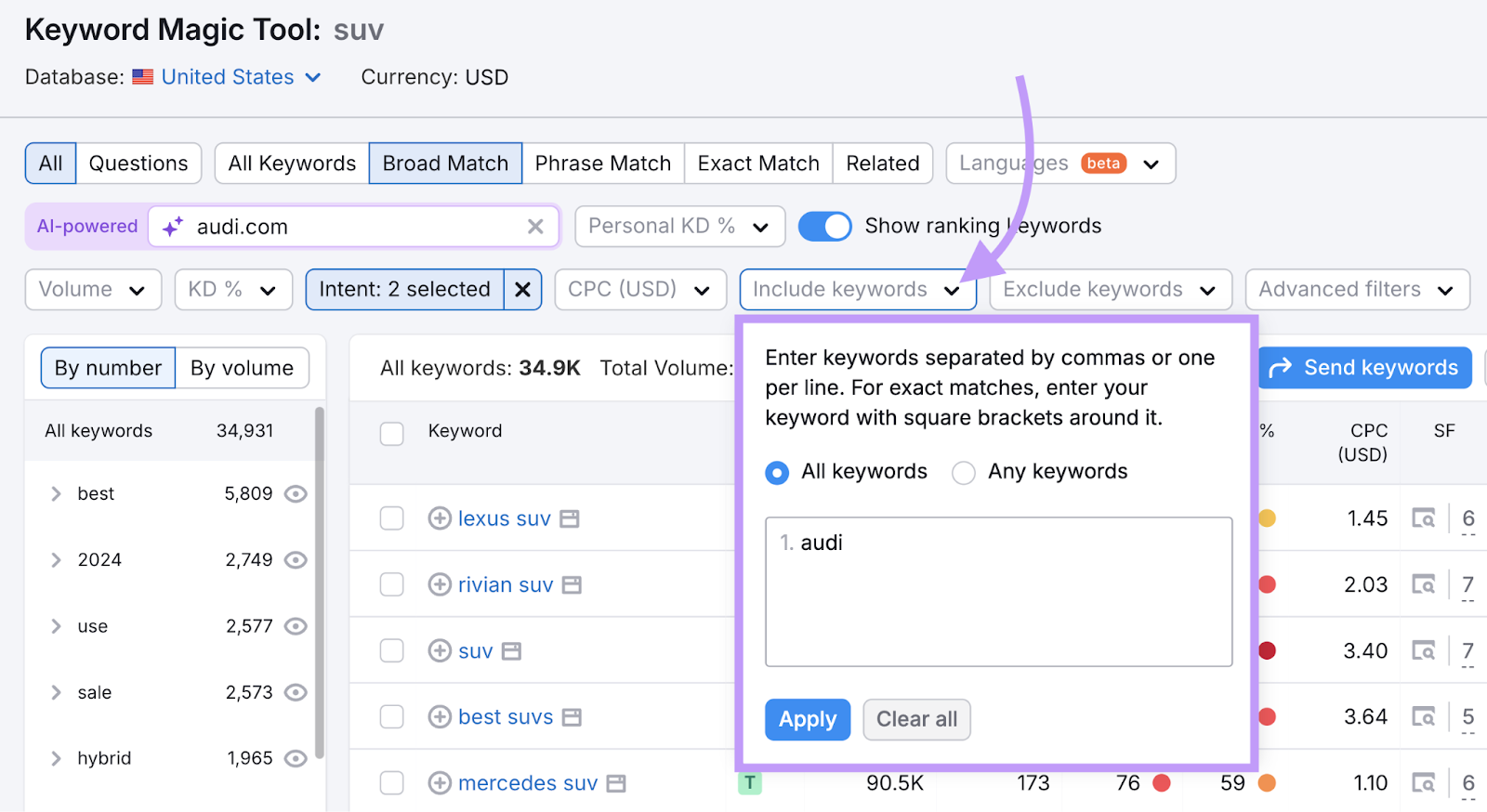
You’ll now see only transactional and commercial terms that include your brand name.
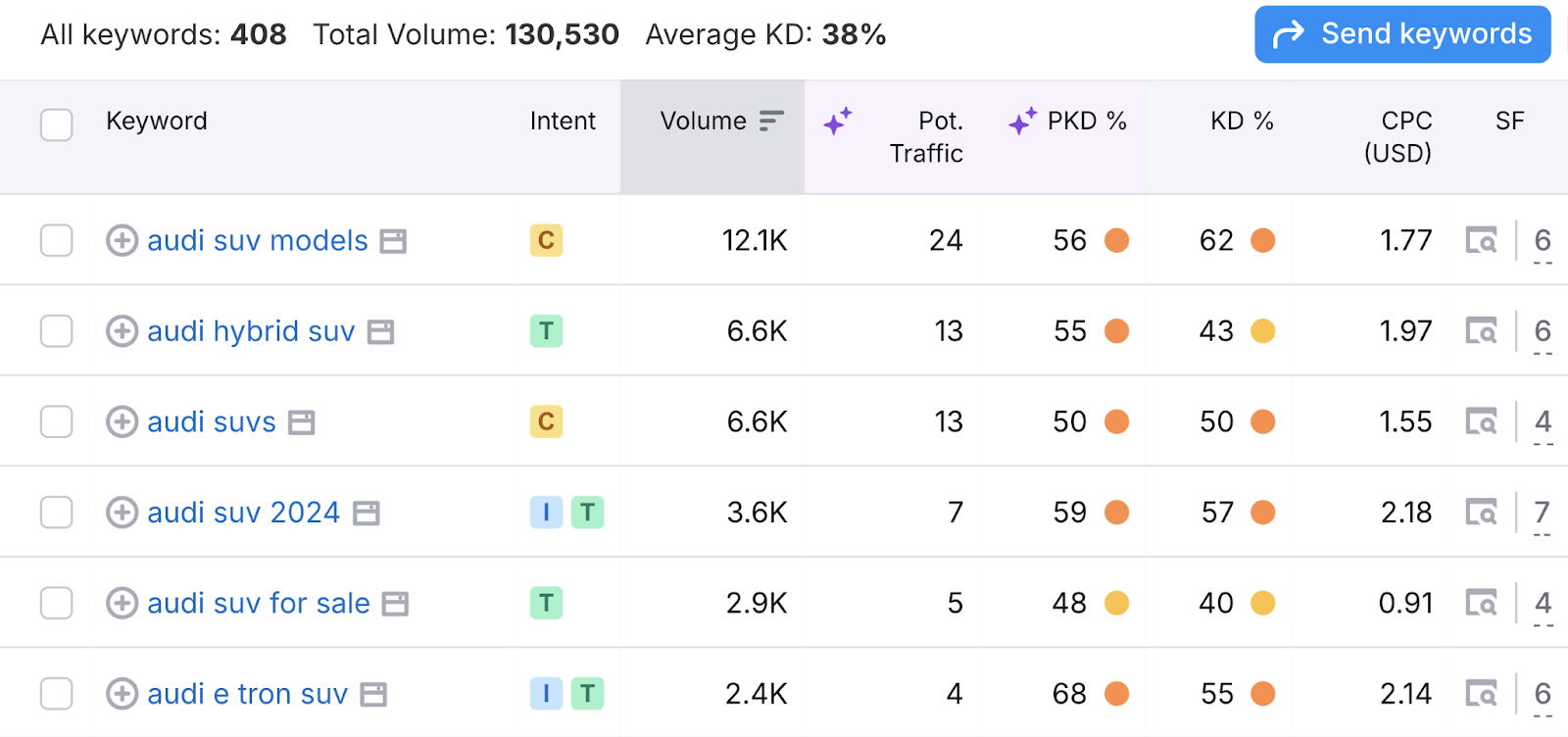
Next, pay attention to the “PKD %” column. This represents each term’s Personal Keyword Difficulty score—which indicates how difficult it will be for your specific website to rank for that term (lower is easier).
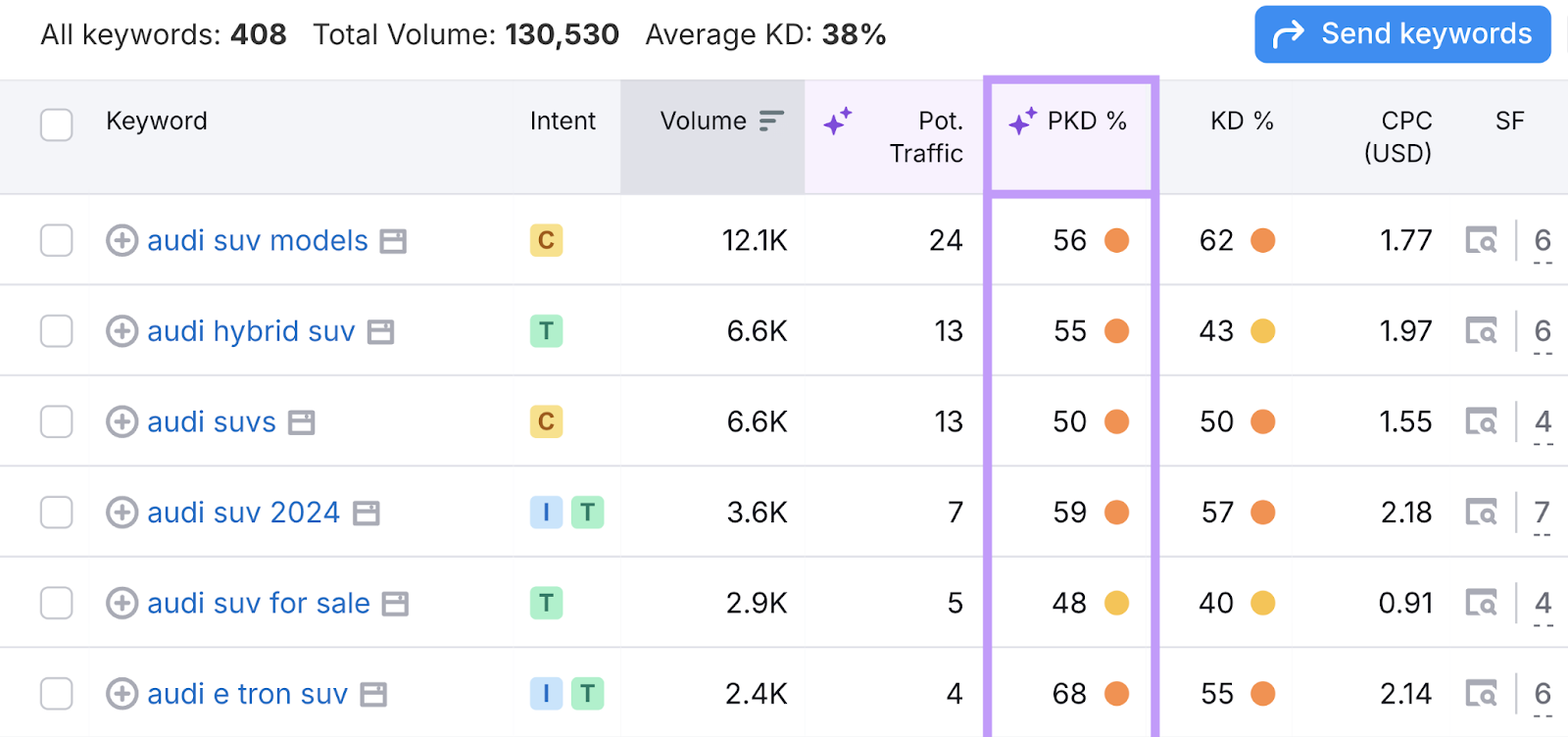
Given we’re looking at branded terms, most of them are relatively easy to rank for. But it’s worth studying this when you consider that some terms may have mixed intent.
Create Content with Keyword Intent In Mind
How well your pages align with keyword intent can drastically affect your chances of ranking in search results.
Thankfully, the process of identifying keyword intent is quite simple when you use Keyword Overview and the Keyword Magic Tool.
You can test out both tools when you sign up for a free trial.
